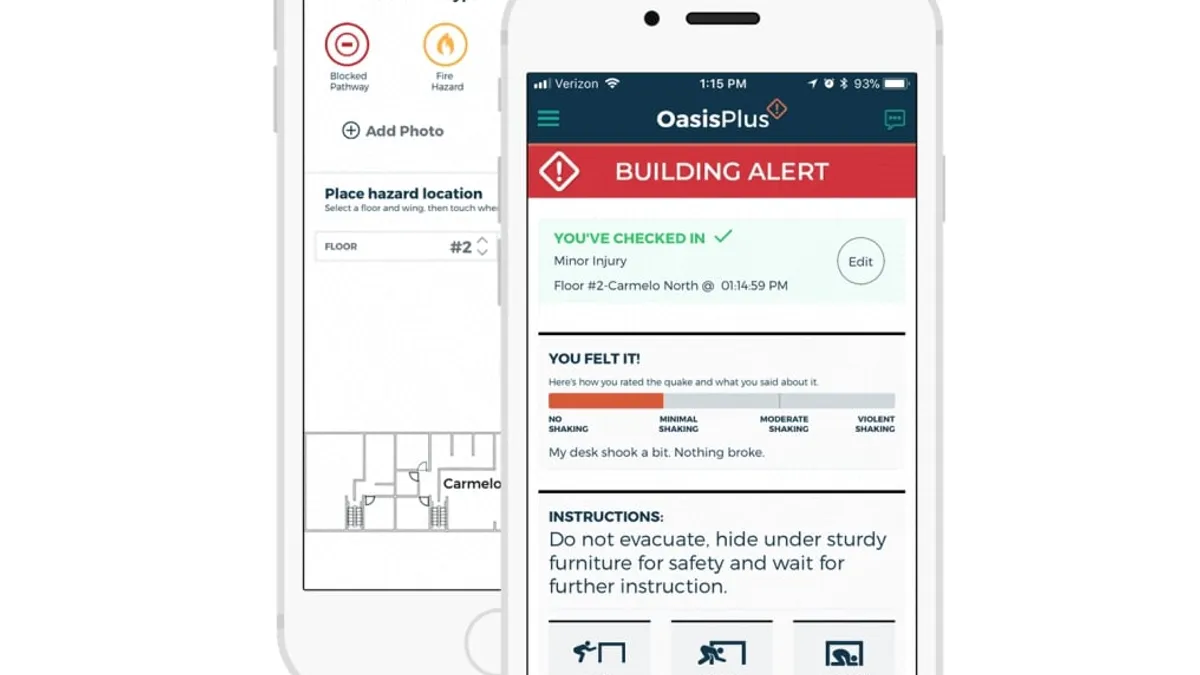Earthquakes are front of mind for many who either experienced the July 4 seismic events in Ridgecrest, CA, or watched the almost around-the-clock news coverage of its aftermath. The AEC industry has tuned into the impact that the quake and its aftershocks had on buildings and other structures like highways and bridges.
Fortunately, the resulting shaking was not enough to warrant concern about structural damage in the two major cities closest to the epicenter, Los Angeles and Las Vegas, according to structural engineer Kelly Cobeen, former president of the Structural Engineers Association of California and associate principal at Wiss, Janney, Elstner Associates in Emeryville, California.
"The level of shaking dissipates so much with distance that, in general, you wouldn't expect damage [as far as Las Vegas and Los Angeles]," she said. "That doesn't mean there might not be a one-off [incident of damage] here and there in a very, very fragile building ... but if someone told me that they had any significant earthquake damage I would be very skeptical about it and make sure it wasn't pre-earthquake damage."
But after a major seismic event, it's that assessment of post-earthquake damage that can be such a chore, and this is where new technology enters the picture, making such work a little easier.
Normally, said structural engineer Derek Skolnik, project engineer at Kinemetrics, between the time a major earthquake hits and when the damage assessments of the superstructure and other building elements are complete, several hours or days could pass depending on the magnitude and the available supply of engineers or others qualified to perform inspections.
While waiting for an evaluation can be stressful for anyone who wants to get back into their home or place of work, this wait can be life-threatening for those forced to relocate out of hospitals and other healthcare facilities.
But Kinemetrics, which has been producing and installing instrumentation that measures seismic activity for almost 50 years, and other companies like Grillo, have developed sensor-based systems that could prove to be game changers when to comes to evaluating earthquake damage.
The systems feature sensors that are placed throughout the structure to record and transmit relevant data — i.e. intensity and length of time — about the earthquake to software that immediately predicts the likely structural damage. Kinemetrics installs sensors at floor level or above ceiling tiles, Skolnik said, in order to obtain the critical measurement of interstory drift, which is the movement of one story in relation to another.
Likewise, Grillo's sensors constantly monitor the oscillations of a building. If an earthquake hits, the company's algorithms determine the potential level of structural damage. The cost of the systems varies depending on size of the building and other factors, the makers said.
If the seismic activity was not significant enough to cause damage, apps like Kinemetrics' OasisPlus will notify the building's owners via customizable reports, allowing occupants to avoid costly, stressful and time-consuming evacuations. If the analysis indicates there might be damage, the system will identify where in the building inspectors should focus their attention, also potentially saving time and money.
"We empower ... onsite teams to respond appropriately to the level of shaking and to see what damage is real and what isn't," Skolnik said.
So far, the full OasisPlus system, which Kinemetrics rolled out in the last year, has been installed in three U.S. hospitals — Seattle Children's Hospital and Navy hospitals in Seattle and San Diego, California. The hospital in San Diego, Skolnik said, registered a negligible amount of movement from the Ridgecrest earthquakes and as expected, there was no damage.
Ultimately, there is no substitute for the expertise of a qualified structural engineer, but tools like OasisPlus and Grillo's Pulse should give building owners and those impacted by earthquake events a little more certainty in what they can expect in the aftermath.











